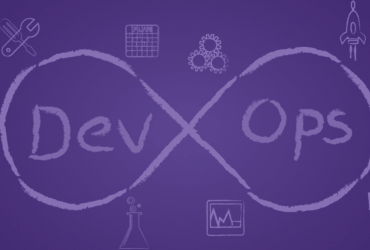DeWhether you’re familiar or not with software development, you may have stumbled on the terms continuous integration and continuous development (CI/CD). These are extremely important, especially as companies are more dependent on applications than ever. Developers are busy working on delivering software with core functions for businesses and CI/CD is critical to their success. How come, would you ask? This article will answer your question.
Buckle up! In the next paragraphs, we will deep dive fast into DevOps, CI/CD, agile development, and waterfall methodology.
Let’s Start with a Daily-Life Use Case for CI/CD
To better understand what we are going to talk about, let’s set the stage.
Have you noticed how dependent you are on your mobile applications? There is an ever-growing need for consumers and businesses to get the right applications for their success.
An Insight article reveals that 66% of small business owners rely on mobile devices to manage operations!
As we are relying on more apps, the focus gets deeper on data privacy and security matters. None of us want our personal or business data to land on the wrong hands. For this reason, software companies need to constantly work on their published applications. They have not only to enhance them with features the end-users are longing for, but also to make sure the software is safe from any possible vulnerability. That is the reason why you get so many application updates on your mobile devices, sometimes on a weekly basis.
Now, imagine you are a software company with one or more published applications. It takes a good process to have your teams deliver weekly updates, version upgrades and new software!
The Traditional “Waterfall” Software Development Methodology
The software development life cycle (or SDLC) includes several phases like analysis, design, coding, testing, integration, deployment and maintenance.
Traditionally, development teams have been using a sequential approach to deliver software. This “waterfall” development model treats each phase of the software development life cycle discretely. Phases are handled one “block” at a time, in a pre-approved sequence. Until the team has gone through the entire process, there is no possible update to the ongoing project in the meantime.
History shows SDLC phases have always been time-consuming activities. The time needed to test and troubleshoot one module of a software can be long. Integration would often delay the delivery of new products or features.
How CI/CD Eases Software Development
In the last decade, a new software development practice has proven to be life-changing for developers. It is continuous integration and continuous delivery, also known as CI/CD.
What Is Continuous Integration?
Continuous integration is a software engineering approach and practice. It focuses on enabling developers to successfully test and integrate new code into existing software with the highest-possible frequency.
Developers using a CI-based approach will merge ongoing coding projects into a shared repository and upload new code as it is produced. Each piece of code uploaded will be automatically tested and any error will be flagged immediately. Developers can then quickly fix errors, sometimes the same day as they are detected. This slashes the integration time considerably.
What Is Continuous Delivery?
Once new code has been successfully integrated, it needs to be released to production.
Continuous Delivery (CD) focuses on packaging and deployment teams. The CD approach aims to ensure rapid building, testing, configuration, packaging, and finally, deployment of the product. The goal is to release new code to production at any time.
CD also relies on automation.
DevOps-focused organizations use CI/CD due to the processes’ emphasis on cross-departmental communication and rapid development cycles.
To learn more about DevOps, read our article here.
So, CI/CD are best practices to getting your business applications up-to-date.
Agile Methodology – How Is It Related to CI/CD?
That brings us to our next point – discussing how CI/CD are related to the ever-popular Agile methodology. While CI/CD are not required for an Agile development methodology, using these two processes can make development much easier.
Why? Because Agile, as a methodology, is an operational strategy that focuses on:
- Removing the barriers that impede common development processes
- Enabling key stakeholders to collaborate, and deliver products more quickly and efficiently.
The Agile model focuses on change – and short, rapid software development cycles. CI/CD fits perfectly within it. It speeds individual product release up and enables quick feedback from customers, allowing for better future iterations of the product.
You’re much better off using CI/CD with an Agile methodology, like Scrum or Kanban.
Continuous Integration and Continuous Delivery (CI/CD): Don’t Miss This Critical Piece of the Puzzle
We have seen that continuous integration and continuous delivery aim to accelerate software development, helping companies to deliver applications and their updates or upgrades in a very fast motion. But what happens if your infrastructure is not ready for this acceleration?
Heavy, unfit and unscalable storage and servers hinder many software companies.
To get the most benefits from your CI/CD strategy, you must invest in a flexible IT infrastructure that can allow for as much concurrent projects as possible, for a shortened software development life cycle.
When you use Ormuco for instance, you exactly get that kind of infrastructure. You can deploy as many virtual machines or Kubernetes containers as you want and benefit from total elasticity. The icing on the cake is, you don’t need expensive hardware to get that architecture. It is not magic, it is simplicity. As a software company ourselves, we know the pain of running an efficient development project to its end. That is the reason why we have simplified our platform.
Last but not least, Ormuco integrates Gitlab, Jira, Sonarqube, and other tools in its marketplace to help you keep up with your CI/CD goals. You can deploy them in a few clicks
Did you know Ormuco helps develop solutions that change the world? Download our free eBook here about how we were able to help the TV broacasting industry with edge computing.





